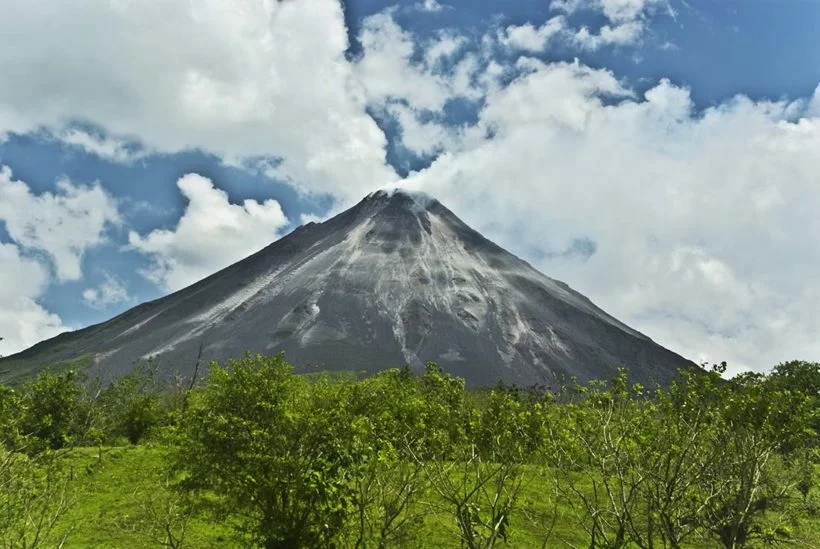The Arenal Volcano National Park is a Costa Rican national park in the central part of the country, part of the Arenal Huetar Norte Conservation Area. At the very gates of Arenal Park, there is an amazing view of the volcano itself and its vigorous activity. The territory of the Arenal Park covers the western side of the volcano, it is to the west and southwest that the Arenal lava flows are currently directed.
 |
| Arenal Volcano National Park Huetar Norte Costa Rica |
Arenal Volcano National Park is spread over 200,000 hectares along the northern spine of Costa Rica. In total, a great variety of geological and biological species have been noted within the national park. Arenal National Park was created in 1991 in the central regions of northern Costa Rica.
Arenal Volcano is an active volcano, its height is 1657 meters above sea level (5435 feet). Its current eruption began on July 29, 1968, after 400 years of dormancy. In one day, three volcanic craters erupted at once, located on the western flank. The hot lava of Arenal traveled 12 km long, enough to destroy the cities of Pueblo Nuevo and Tabacon. Approximately 87 people died as a result of this eruption.
 |
| Arenal Volcano National Park Huetar Norte Costa Rica |
In September of the same year, only one crater remained active, its violent eruptions were noted until 1973, after which a completely different crater, located at an altitude of 1450 meters above sea level, began to show maximum activity. It is this crater that produces eruptions to the surface of the volcano to this day. Its lava has a basaltic composition and is characterized by frequent explosions of gases.
There is also another volcano in the park - Chato. Its crater contains a lagoon, the volcano itself is dormant (does not show activity for about 3500 years). However, the period of education at Chato and Arenal completely coincide.
 |
| Arenal Volcano National Park Huetar Norte Costa Rica |
As for Lake Arenal, it is one of the largest reservoirs in Costa Rica. The lake was formed by combining existing small lakes, the lake has tripled in size from its original size, and today its water surface area is 33 square miles (85 km 2). In 1979, a dam was built on the lake. The depth of the Arenal ranges between 100 and 200 feet (61 m). It is said that under the lake is the ancient city of Arenal. From November to April, strong winds attract windsurfers to the lake.
The climate of Arenal Volcano National Park is strongly influenced by the Pacific and Atlantic oceans. The average annual temperature here ranges from 21 to 27.5 ° C. The rainy season in Arenal falls from May to January, the dry season lasts from February to April. The average annual rainfall ranges from 3500 mm to 5000 mm, depending on the altitude of the area.
 |
| Arenal Volcano National Park Huetar Norte Costa Rica |
The flora of the Arenal Volcano National Park is represented by the following species: Bait, Ceiba, Cirri, Laurel Higuerones, mushrooms, Guarumo, the presence of a significant number of palm trees, Heliconias, orchids, ferns and bromelias (among them an endemic species: Pitcaimia Funkiae) is noted. The fauna of Arenal is also large and diverse. Tapirs, deer, red-faced monkeys, white-faced monkeys, snakes live in the vicinity of the most formidable volcano. Birds are represented by the following species: parrot, sergeant, orioles, brown magpies, hummingbirds, quetzals, etc.
In the Arenal Volcano National Park, quite short routes are laid for tourists (3.4 km, or even 2 km). All routes and ecological paths in the park pass through the secondary forest, young and old lava fields from different volcanoes.
In general, the Arenal area is quite important for the entire country - they play a central role in the production of electricity in Costa Rica. Located east of the volcano, Lake Arenal provides approximately 40% of the country's total electricity. South of the volcano are the high mountain regions of Monteverde Cloud Forest, where the best coffee in Central America is produced.